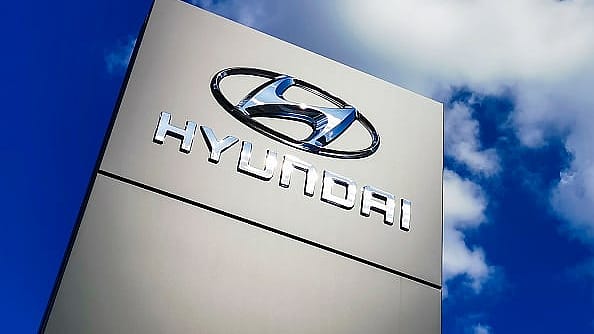Hyundai slips to 4th spot as Mahindra, Tata race ahead in Feb
ADVERTISEMENT

Hyundai Motor India slipped to the fourth spot in retail sales of passenger vehicles in the month of February as homegrown carmakers Mahindra & Mahindra and Tata Motors took the second and the third spot in vehicle registrations, according to Vahan data.
This is the first time when the South Korean automaker has slipped to the fourth position in India’s car market.
Hyundai recorded retail sales of 38,156 units in February compared with 39,889 cars sold by Mahindra & Mahindra, catapulting M&M to the second spot. Tata Motors stood third with sales of 38,696 units.
Consequently, Hyundai's market share fell to 12.58% while Mahindra's rose to 13.15%.
Retail sales of passenger vehicles fell sharply by 10.34% year-on-year to 3.03 lakh units in February compared with 3.38 lakh units in the same month last year, according to the Federation of Automobile Dealers Associations of India (FADA).
Dealers noted weak market sentiment which specially continues in the entry level category, delayed conversions, challenging targets and stressed that OEMs should avoid overburdening dealers with excessive inventory—a practice that risks unmanageable stock levels given the cyclical nature of the industry, said FADA President C S Vigneshwar.
December 2025
The annual Fortune 500 India list, the definitive compendium of corporate performance, is out. This year, the cumulative revenue of the Fortune 500 India companies has breached $2 trillion for the first time. Plus, find out which are the Best B-schools in India.
“This feedback underscores the need for greater alignment between national strategies and local dealer insights. Inventory levels in this segment remained in the range of 50-52 days,” he said.
February witnessed a broad-based downturn across all categories. Overall, the market closed with a 7% decline, with two-wheelers (2W), three-wheelers (3W), PV, tractors and commercial vehicles (CV) falling by 6%, 2%, 10%, 14.5% and 8.6% respectively.
During the month, dealers began expressing concerns about inventory being pushed to them without their consent. While such initiatives may serve broader business objectives, it is critical to align wholesale allocations with genuine demand to protect dealer viability and ensure healthy inventory management, said Vigneshwar.
In the two-wheeler segment, retail sales dipped by 6.33% year-on-year to 13.53 lakh units. Urban areas experienced a sharper decline of 7.38% compared to a 5.5% drop in rural markets. Rural performance was better due to better agricultural sentiments and seasonal marriage demand, Vigneshwar said. Dealers attributed this to inventory imbalances, aggressive pricing adjustments (notably post-OBD-2B), weak consumer sentiment, lower enquiry volumes and limited finance availability. Concerns over slow-moving models and external economic pressures, such as liquidity constraints and inflation, further intensified these challenges, said Vigneshwar.
Retail sales of commercial vehicles dropped by 8.6%. “Dealers pointed to a challenging commercial environment, with weak sales in transportation sector, tightening finance norms and pricing pressures delaying customer decisions—particularly in bulk orders and institutional contracts. While robust order bookings, notably in the tipper segment driven by increased government spending and steady supplies offered some relief, the prevailing negative sentiment and structural market shifts call for a more adaptive approach. There is cautious optimism that the market will improve in March as dealers recalibrate their targets to better align with current demand,” Vigneshwar said.
The near-term outlook for auto retail in March 2025 is cautiously optimistic, with dealer expectations indicating that nearly 45% foresee growth, 40% expect flat performance and only 14% anticipate de-growth. However, challenges remain, as five consecutive months of declining stock markets have dampened consumer confidence—with investors closing more SIPs rather than opening new ones and reduced discretionary spending driven by dented profitability.
